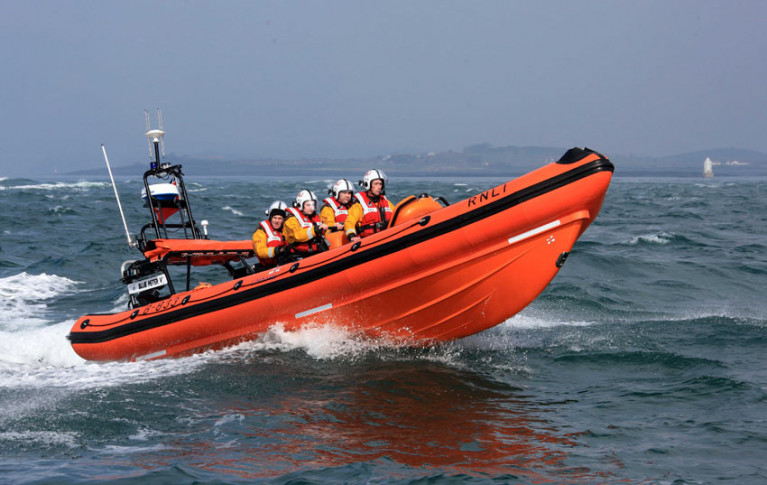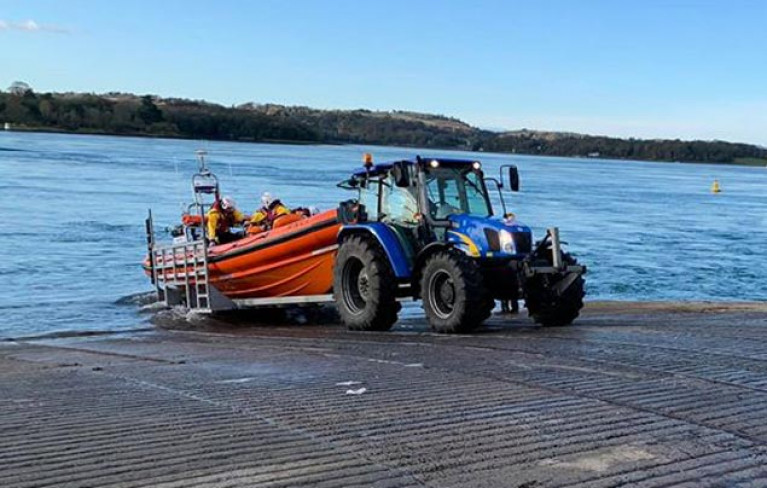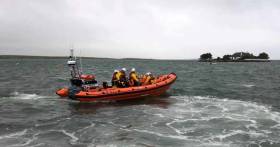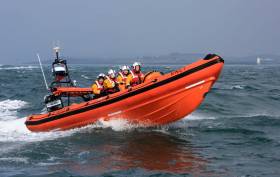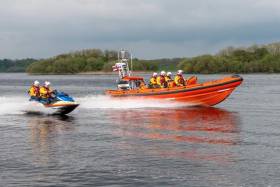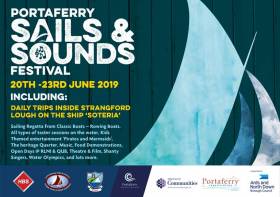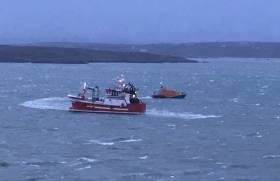Displaying items by tag: Portaferry
Portaferry RNLI came to the aid of two people on jet skis who got into difficulty at Cloughy Bay in Co Down yesterday afternoon (Sunday 7 June).
Portaferry’s volunteer crew launched the inshore lifeboat promptly at 3.14pm and made their way to the scene in sunny conditions with good visibility and a Force 4 northerly wind.
Arriving 11 minutes later, the crew noticed two people in the water and hanging on to their jet skis, along with a kayaker who had rowed out to assist but in doing so had gott into difficulty.
The volunteer crew recovered all three people out of the water and took them aboard the lifeboat, bringing them to safety on the shore of Strangford Lough.
Yesterday, Portaferry RNLI volunteer crew were requested to launch at 1225 to reports of a person in the water clinging to a small craft at Greyabbey Bay on Strangford Lough in Northern Ireland.
Greyabbey is a small village about 11 miles north of Portaferry on the eastern shore of the lough.
The crew launched in good conditions and headed towards the casualty position as given On approaching the lateral marks at Kircubbin, the coastguard advised the lifeboat to stand down as the person had self-recovered.
They returned to the station and subsequently were asked to launch again at 1430 but on arrival at the station were stood down by the Coastguard.
All those involved in the incidents are safe and well.
Portaferry RNLI Assist Workers Stranded on Island in Deteriorating Weather Conditions
Portaferry RNLI came to the aid of three people stranded on Trasnagh Island near Whiterock at Killinchy on the western shore of Strangford Lough this afternoon, as the weather deteriorated.
Portaferry’s volunteer crew launched promptly at 1.26 pm and made their way to the island and arrived on scene at 1.45 pm, in fair but rainy weather conditions and easterly winds. The sea state was moderate.
When on scene, the volunteer crew transferred the three workmen off the island, where they had been working since the early hours of the morning. As the weather had got worse, the small boat that they had used to get out to the island was not suitable to complete the return journey to shore. The lifeboat crew took the three workmen to shore, where they were met by the local coastguard team.
Commenting on today’s call out, Graham Edgar, Portaferry RNLI Deputy Launching Authority said: ‘While not in any immediate danger, the men certainly took the right course of action today calling for help once they realised that they could not get back to shore. We were delighted to help and would urge anyone considering going to sea to take all necessary precautions and respect the water.’
Five Crew Rescued From Fishing Boat Aground At Ardglass Harbour
Five crew were rescued from a fishing vessel that ran aground on rocks on approach to Ardglass Harbour early yesterday morning (Wednesday 23 October).
Portaferry and Newcastle RNLI’s volunteer lifeboat crews launched to assist after a Mayday call from the 24-metre vessel, which had been drifting towards Phennick Point outside the harbour.
The Belfast Telegraph reports that the boat, the Cork-registered Dillon Owen, was attempting to enter the harbour to land its herring catch when it quickly lost powe
As the lifeboats proceeded towards Ardglass, the fishing vessel was stuck on the rocks and had begun taking on water. The Dublin-based Irish Coast Guard helicopter Rescue 116 was also scrambled to the scene carrying extra pumps.
Following a dynamic risk assessment between the lifeboats and fishing boat skipper, an attempt was made to tow the vessel off the rocks.
But due to worsening weather and tidal conditions, it was decided after numerous attempts by the Newcastle lifeboat coxswain to evacuate the crew of the vessel instead — with Rescue 116 airlifting them to safety upon its arrival.
Speaking after the rescue, Newcastle RNLI coxswain Nathan Leneghan said: “This morning's rescue was a success due to multi-agency teamwork with our colleagues in the Irish Coast Guard, volunteers at Portaferry RNLI and Portaferry and Newcastle coastguard teams. Thankfully this was positive outcome, and all five fishermen are safe and well.”
Kevin Quigley of the NI Fishery Harbour Authority said the fishing vessel remained listing “very badly” at the harbour and further attempts would be made to refloat it.
Portaferry RNLI Celebrates 40 Years Of Lifesaving
Portaferry RNLI celebrated the lifeboat station’s 40th anniversary this past weekend with a party and presentation evening for crew members and their families.
During the course of the evening, the crew paid thanks to past and present members for their dedication and hard work over the last 40 years.
Portaferry lifeboat station owes its origins to an RNLI lifeboat station that was established in 1884 in the village of Cloughey, Co Down. The first lifeboat, called The Faith, was commissioned a short while after in 1885.
With the introduction of fast inshore lifeboats that were capable of making way against strong tidal currents such as those experienced in the Strangford Narrows, it was decided in 1979 to place a single-engine C class lifeboat in Portaferry for evaluation.
The lifeboat quickly proved to be a success and a twin engine D class was commissioned, before the station was officially established on 1 May 1980. The station was upgraded to 24-hour all-year operation in 1982.
The past 40 years have seen huge changes in the technology and design of the boats and the personal safety equipment worn by the crew.
Portaferry now operates a B class Atlantic 85 lifeboat known as Blue Peter V. Portaferry is one of seven Blue Peter RNLI stations, and the only one in Ireland, whose lifeboats have been sponsored by the world's longest-running television programme for children.
Presentations were made on the evening to past and present crew members for their hard work and commitment over the last four decades.
Lenny Lawson, Graeme Ellison and Billy Ellison were awarded certificates from the RNLI for their service of the many different roles they held within the station.
John Murray Snr, Pat Browne and Mrs Brownlow were presented with a present as a token of thanks from the crew for all their hard work and efforts in the roles they play in the fundraising guild team and throughout the station in the past 40 years.
Colin Conway and John Murray Jnr were presented with RNLI medals and a present from the crew to acknowledge their long service awards for 20 years and 40 years respectively.
The evening was enjoyed and attended by crew members, family and other members of the different teams within Portaferry lifeboat station.
Busy Weekend For Northern Ireland Lifeboats As Summer Season Ends
Northern Ireland lifeboat crews marked the end of the summer season with a number of callouts over the weekend.
On Saturday afternoon (31 August) Portaferry’s inshore lifeboat wad called out to reports that two Flying Fifteen keelboats had capsized on Strangford Lough.
On arrival it was found both vessels had been righted and were returning to shore, Portaferry RNLI said.
But while out on the lough, the lifeboat crew were also tasked to aid a 36ft yacht which had run aground on Don O’Neill Island some four miles away.
At the scene, the lifeboat crew ensured that all on the yacht and their dog were safety aboard their vessel and that there was no water being taken on.
The following afternoon (Sunday 1 September), the inshore lifeboat launched to a motorboat with two adults and three children that had run aground in the Narrows.
Another vessel had taken the casualty boat under tow to deeper water and the lifeboat crew followed up by escorting the motorboat to Portaferry Marina.
Elsewhere on Sunday, Carrybridge RNLI’s inshore lifeboat and rescue water craft were launched to a vessel with four on board which had grounded west of the Share Centre on Upper Lough Erne.
After carefully navigating the shallow waters and assessing the condition of the two adults and two children on board, the lifeboat crew checked the vessel for water ingress and none was found.
With the owner’s permission, the volunteer crew set up a tow line and proceeded to refloat the casualty vessel in deeper water.
The barge was again checked for water ingress and the steering and propulsion also checked before they were allowed to continue their journey.
Carrybridge lifeboat operations manager Stephen Scott reminded all boaters to plan their routes carefully using revenant charts to avoid difficulties in unexpectedly shallow waters.
Busy Bank Holiday For NI Lifeboats In Larne & Portaferry
Larne RNLI’s volunteer crew were kept busy with two callouts in quick succession on yesterday’s Bank Holiday (Monday 26 August), while the Portaferry lifeboat had an early-hours launch to aid a yacht run around in Strangford Lough.
Larne’s inshore lifeboat Terry launched in calm seas to reports of an inflatable driving out to sea at Ballygally beach, Larne RNLI says.
After a brief search of the area, the inflatable was recovered, deflated and returned to its own owner, who was offered some advice on water safety.
Shortly after, while the crew were recovering the inshore lifeboat at East Antrim Boat Club, reports came through from the Portmuck Coastguard mobile team of a paddle boarder in difficulty just off Muck Island, near Islandmagee.
Relaunching at 3.30pm, the lifeboat approached the island to search for the casualty and were directed to his location by a passing’s jetskier.
When the lifeboat crew reached the boarder, Larne RNLI says they learned that the man had been on the water with his two daughters and hadn’t realised the currents had been taking them further out to sea.
One of the girls made it back to shore, but the father and his other daughter were in difficulty — however, the jetskier realised their predicament and offered to take the other girl back to shore while the father called for help.
By the time the lifeboat reached him he had been fighting the currents for 45 minutes and was tired.
After assessing him for injuries, he and his board were brought into Portmuck at Islandmagee.
Inshore lifeboat helm Pamela Leitch said following the callouts: “Please be aware of the strong currents and crosswinds around our coastline. It doesn’t take much for someone to get into real difficulty when they are blown out to sea.”
Much earlier in the day, Portaferry RNLI’s volunteers were tasked by Belfast Coastguard to assist a yacht with two on board that had run aground on Roe Island in Strangford Lough.
The inshore lifeboat launched under little moonlight at 12.50am and were on scene 28 minutes later, taking the yacht under tow to a safe place to anchor.
Portaferry RNLI press officer Jordan Conway said: “The yacht’s crew made the right decision to call for help as there was a falling tide and the situation could have got a lot worse.
“We would remind everyone planning a trip at sea to always respect the water. Always wear a lifejacket, always carry a means of communication and should you get into difficulty, dial 999 or 112 and ask for the coastguard.”
Two Launches Within Five Hours On Saturday For Portaferry Lifeboat
Portaferry’s volunteer lifeboat crew had a busy Saturday (17 August), launching twice before providing rescue cover at a local triathlon event.
The first callout was in the morning to a 21ft yacht with engine failure that was at risk of drifting ashore at Newtownards Sailing Club in Strangford Lough, Portaferry RNLI says.
The lifeboat arrived on scene 25 minutes after launch in rough seas and set about establishing a tow to bring the yacht to the moorings at Newtownards Sailing Club, where the two men on board were met by the Bangor Coastguard rescue team.
“They certainly took the right course of action calling for help once they realised that the engine had failed,” the station’s deputy launching authority said.
“We are all delighted with the outcome and urge anyone considering going on the water to take all necessary precautions.”
In the afternoon, the crew were on standby in the station waiting for the triathlon to commence when they noticed a yacht drifting backwards in the Narrows.
They promptly launched the inshore lifeboat to assist the six-metre yacht to nearly moorings in Castleward Bay.
Portaferry is preparing for a four-day Sailing and Music and family fun festival which will be the biggest maritime event to come to Ards Peninsula since the very popular ‘Galway Hooker Festival’ of many years ago.
The event is being hosted by Portaferry Sailing Club and will centre around their Club House on the Shore Front. Events will spread out from the Club to all parts of the town ensuring plenty of family fun for everyone.
The Club is expecting boats from all over the lough and North Down, Scotland, England, Wales, Isle of Man & ROI and farther afield.
The boats will gather on Thursday and Friday for registration, race on Saturday the 22nd in Strangford Lough and have a final Parade of Sail on Sunday the 23rd.
The festival highlight is a unique opportunity for the public to engage on the water and to cruise the lough on the beautiful boat “Soteria” and for game of thrones fans an opportunity sail past the famous original filming ground of “Winterfell” not forgetting two game of thrones doors one in Strangford and one in Portaferry.
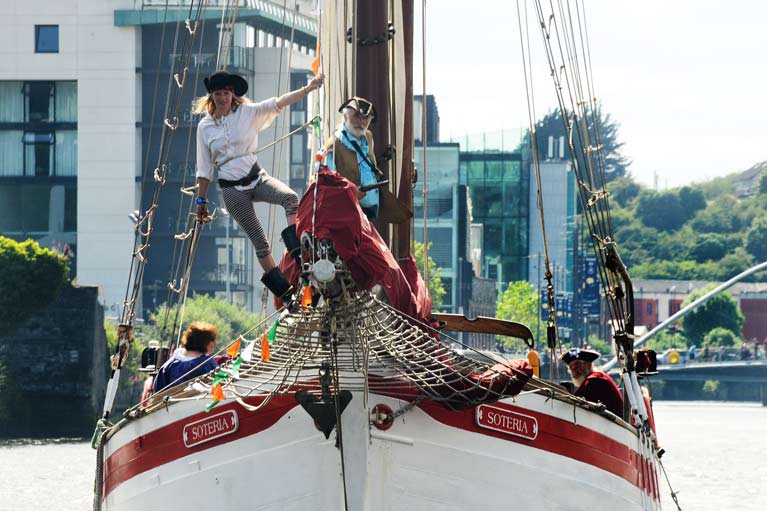 The Gaff-rigged sailing schooner 'Soteira' built in 1932 will visit Portaferry Sails and Sounds Festival
The Gaff-rigged sailing schooner 'Soteira' built in 1932 will visit Portaferry Sails and Sounds Festival
Other tours include guided walking tours and are available to book via www.ticketsource.co.uk/ardsandnorthdown
There will also be Skiff racing taster sessions and a very special Water Olympics with a twist, and if you fancy kayaking now’s your chance for a taster session with the Mobile team adventure (go to the website to book) for registration and other bookings events see programme via sails and sounds on facebook/website… don’t miss out!
Food Tasting
To complement the sailing, there will be local food outlets promoting local produce food tasting and cooking demonstrations and even a chance to go foraging cook food from the water’s edge The visiting public will be entertained by traditional dancing from both our Irish and Scottish heritages and giving displays and competing at several open-air venues. Portaferry’s Bars and restaurants are also gearing up for the Festival with live music and special food menus to keep locals and visitors replenished.
The Festival committee will be providing crafts for kids, kite making, treasure trail even chance to find some Portaferry Rocks, art competitions, street entertainment, inflatables, face painters, and much, much, more. In addition, there will storytelling, dress -up and crafts at the Portaferry Library free open days at the RNLI and QUB.
MINESTO will be demonstrating their Deep Green energy project on Strangford lough our local, PAST Maritime Museum will be doing an Exhibition of 1000 years of ferry service which will complement the new project around the town “FERRY DOORS” and there will be photo opportunities in the ‘Pirate Photo Booth’ and there's a chance to meet Portaferry's very own Captain Jack Sparrow.
There will be information stands by the local groups and emergency services and opportunity to meet the big lottery community winners Ards Peninsula 1st Responders.
Theatre entertainment @ Portico’s “Anthony Toner” celebration of his new album “Our Lady of the Wind and Rain” Sails and Sounds Festival will have music from Scotland’s Box O Banana’s and Ireland's Hair o the Dog Irish traditional band and “Many of the owners and crew members of the boats are musicians themselves, so this is a double whammy for them”.
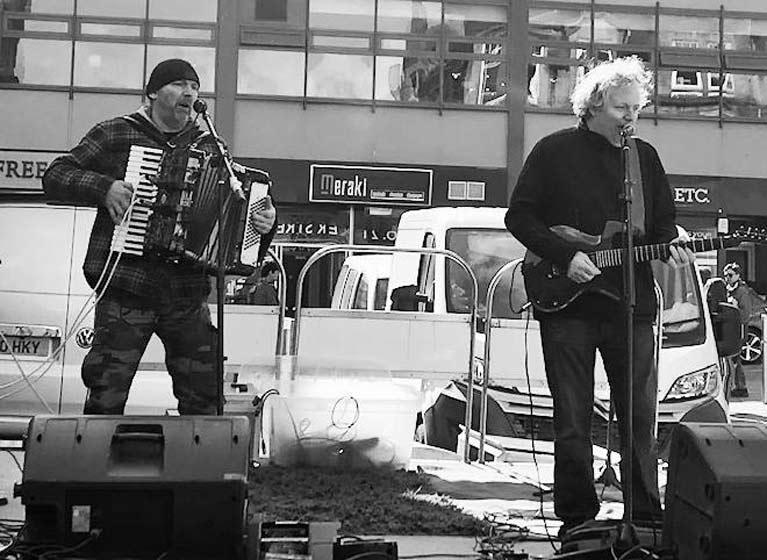 Box o bananas on stage
Box o bananas on stage
For all gin, vodka and whiskey lovers there is an afternoon of “Tastes of the Peninsula” all products from the local distillery Echlinville tickets £20 available Portaferry Sailing Club.
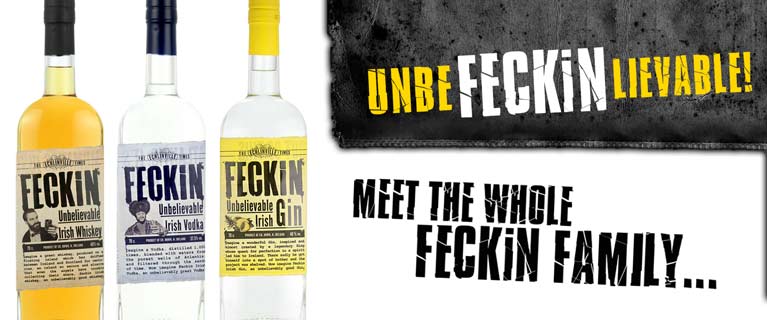
Look out for details of all events, locations and times to be published and distributed all over the province in the near future.
The festival programme can be found on the exclusive website or follow on facebook, for updates and festival information.
There are also trips aboard the Schooner ‘Soteria’ on Strangford Lough, Kayaking and walking tours
Special thanks goes to the Ards and North Down Borough Council & Dept for Communities for their supporting the festival This promises to be one of the highlights of the summer and will involve many volunteers and local business owners who will go out of their way to extend a welcome to all visitors whether they come by land or by sea.
Baltimore & Portaferry Lifeboats Launch During Storm Hannah
Lifeboats in Baltimore and Portaferry were launched yesterday evening (Friday 26 April) as Storm Hannah swept over the island of Ireland.
Baltimore RNLI’s volunteer lifeboat crew launched their all-weather lifeboat at 8.30pm after learning of a local fishing trawler that was dragging its anchor in high winds near Sherkin Island in West Cork.
The lifeboat arrived on scene at 8.43pm and transferred four extra crew aboard the 26.2m trawler. Once they were satisfied that the casualty vessel was back at safe anchor, the lifeboat returned to station by 9.11pm as the storm intensified.
Conditions at sea during the callout were very rough, with Force 10 winds gusting to Force 11, and a two-metre sea swell within the harbour.
Elsewhere, the volunteer lifeboat crew from Portaferry RNLI launched to reports of a missing dingy with three people on board.
The lifeboat crew proceeded to Pig Island near Newtownards in Strangford Lough and were joined in the search by local coastguard and Rescue 119 from Preswick in Scotland.
However, all rescue teams were stood down after a thorough search of the area revealed nothing.
Commenting on the callout, Jordan Conway, Portaferry RNLI lifeboat press officer, said: “Despite the weather conditions deteriorating as the volunteer lifeboat crew reached the scene, a full search was carried out in conjunction with our colleagues in the coastguard and Rescue 119.”
As previously reported on Afloat.ie, Castletownbere RNLI also launched last night to a 33ft fishing vessel which lost all power in Bere Haven Harbour are the storm bore down.
While the severe weather has now passed, sea conditions will remain rough over the next few days, and Baltimore RNLI’s Kate Callanan urged anyone on or near the water to “exercise caution in particular along the coastline.
“If you get into trouble or see anyone in difficulty at sea or along the coast, call 999 or 112 and ask for the coastguard.”



























